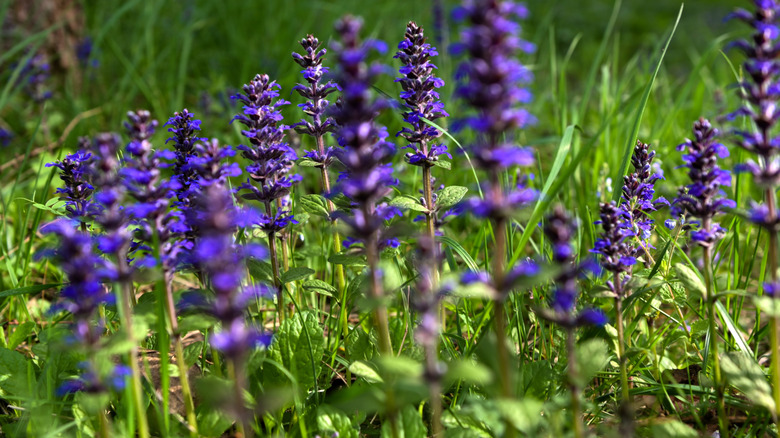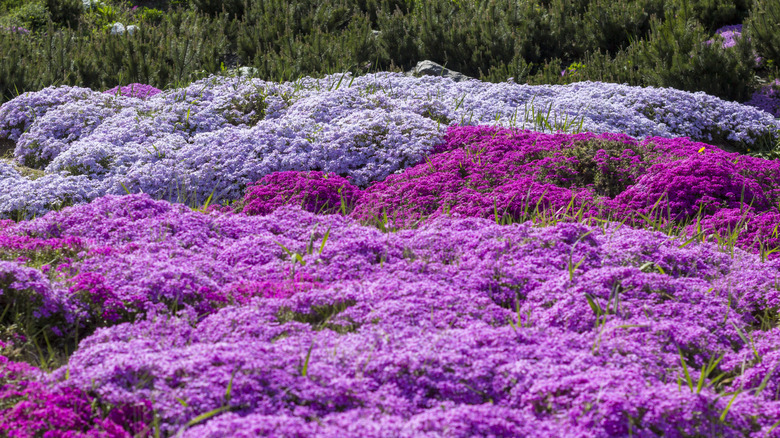Why You Should Reconsider Growing Ajuga As A Ground Cover
Ground cover plants can be a great way to suppress weed growth in gardens and in some cases even replace turfgrass lawns. Bugleweed, also known as ajuga (Ajuga spp.), is a popular ground cover option thanks to its fast-growing nature, unusual foliage colors, and pretty flowers. Unfortunately, ajuga is often so fast growing and aggressive that it can become invasive in some areas, particularly in parts of the eastern United States.
Carpet bugleweed (Ajuga reptans) is one of the most popular types of ajuga to use as a ground cover. With a height of only a foot and a fair amount of tolerance for both foot traffic and mowing, it's no wonder many gardeners in USDA zones 3 through 10 have used this herbaceous perennial ground cover to choke out weeds.
Unfortunately, carpet bugleweed's impressive ability to grow in a variety of settings and spread rapidly via runners can make it an invasive ground cover that is best to steer clear of. Fans of ajuga may want to check out other, less aggressive species, like Geneva carpet bugleweed (Ajuga genevensis), and anyone just looking for a good ground cover may want to opt for a native option, like alumroot (Heuchera americana) or self-heal (Prunella vulgaris ssp. lanceolata).
Removing and replacing ajuga
If you already have an overly aggressive patch of ajuga you need to remove, it's best to remove it by hand if possible, but remember that it may be a long process. This is because ajuga, like many plants in the mint family, can regrow from root fragments. While herbicides are also an option for removing ajuga, if you don't follow the instructions carefully, they can potentially injure other plants in the process.
Once you've dealt with removing any overly aggressive ajuga growing in your yard, you're ready to pick out a more appropriate ground cover plant to replace the bugleweed. In addition to Geneva bugleweed and self-heal, there are a variety of excellent alternatives to carpet bugleweed. If you were initially drawn to bugleweed because it's a ground cover that deer won't touch, then something like sweet woodruff (Galium odorata), which is hardy in USDA zones 4 through 9, could be the perfect replacement. If it was instead the bugleweed's gorgeous purple flowers that drew you in, then creeping phlox (Phlox stolonifera), which is hardy in zones 5 through 8, could be the perfect ground cover for you.

